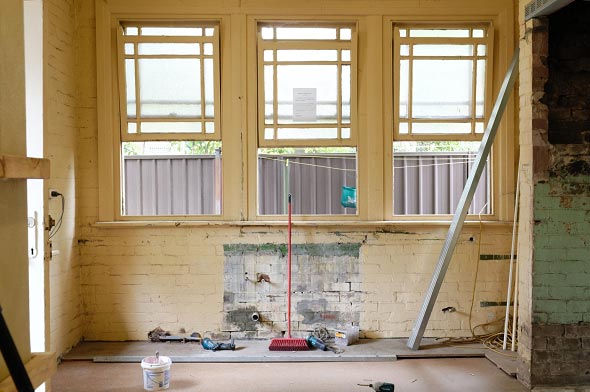Do's and also Don'ts Throughout Water Damage Emergency Situations.
Do's and also Don'ts Throughout Water Damage Emergency Situations.
Blog Article
What are your ideas regarding Simple Solutions To Preventing Fire And Water Damage To Your Home?

Water offers life, but water invasion on some parts where it's not expected to be can cause damage as well as hassle. It can peel off away the surface area and wear down the product's foundation if the water leaks right into your structure. Mold as well as mildew likewise prosper in a moist atmosphere, which can be harmful for your as well as your family's health. In addition, residences with water damages smell old and moldy.
Water can come from many sources like tropical storms, floodings, ruptured pipes, leakages, and sewage system problems. It's far better to have a working knowledge of security preventative measures if you have water damage. Below are a couple of guidelines on exactly how to take care of water damage.
Do Prioritize Home Insurance Policy Protection
Seasonal water damage can come from floods, seasonal rainfalls, and wind. There is likewise an occurrence of an abrupt flooding, whether it originated from a malfunctioning pipeline that unexpectedly bursts into your home. To shield your home, obtain house insurance that covers both acts of God such as natural catastrophes, and emergency situations like damaged plumbing.
Don't Neglect to Switch Off Energies
When disaster strikes and also you remain in a flood-prone location, switch off the major electrical circuit. Shutting off the power prevents
electric shocks when water can be found in as water acts as a conductor. Don't fail to remember to turn off the primary water line valve as a means to avoid more damages.
Keep your furnishings stable as they can relocate around and cause added damage if the floodwaters are getting high.
Do Remain Proactive and Heed Weather Informs
If you live in a location pestered by floodings, stay positive and also prepared at all times. Pay attention to the information as well as discharge warnings if you live near a body of water like a creek, lake, or river .
Don't Neglect the Roof
Before the weather condition turns terrible and also for the even worse, do a roof covering examination. A better practice is to have a yearly roof covering assessment to mitigate complex concerns as well as future issues. A good roofing with no holes and leakages can be an excellent guard versus a device and the rain to avoid rain damages. Your contractor must care for the damaged gutters or any other indications of damage or weakening. An assessment will certainly protect against water from streaming down your wall surfaces and soaking your ceiling.
Do Focus On Tiny Leaks
There are red flags that can attract your attention and show to you some weakened pipes in your house. Indications of red flags in your pipelines include gurgling paint, peeling off wallpaper, water streaks, water discolorations, or leaking sounds behind the walls. Fixing and also examine your plumbing fixed before it results in massive damage to your home, financial resources, and an individual headache.
Don't Panic in Case of a Burst Pipe
Timing is key when it comes to water damage. If a pipeline bursts in your house, instantly shut off your primary water valve to reduce off the source and also stop more damage. Call a respectable water damages repair expert for assistance.
Water offers life, however water intrusion on some components where it's not expected to be can result in damage as well as hassle. In addition, homes with water damage scent old as well as musty.
Seasonal water damage can come from floodings, seasonal rains, and wind. Indications of red flags in your pipelines include bubbling paint, peeling wallpaper, water streaks, water spots, or dripping noises behind the walls. If a pipeline ruptureds in your house, right away closed off your main water shutoff to cut off the source and also stop even more damage.
Some Do's & Don't When Dealing with a Water Damage
DO:
Make sure the water source has been eliminated. Contact a plumber if needed. Turn off circuit breakers supplying electricity to wet areas and unplug any electronics that are on wet carpet or surfaces Remove small furniture items Remove as much excess water as possible by mopping or blotting; Use WHITE towels to blot wet carpeting Wipe water from wooden furniture after removing anything on it Remove and prop up wet upholstery cushions for even drying (check for any bleeding) Pin up curtains or furniture skirts if needed Place aluminum foil, saucers or wood blocks between furniture legs and wet carpet Turn on air conditioning for maximum drying in winter and open windows in the summer Open any drawers and cabinets affected for complete drying but do not force them open Remove any valuable art objects or paintings to a safe, dry place Open any suitcases or luggage that may have been affected to dry, preferably in sunlight Hang any fur or leather goods to dry at room temperature Punch small holes in sagging ceilings to relieve trapped water (don't forget to place pans beneath!); however, if the ceiling is sagging extremely low, stay out of the room and we'll take care of it DO NOT:
Leave wet fabrics in place; dry them as soon as possible Leave books, magazines or any other colored items on wet carpets or floor Use your household vacuum to remove water Use TV's or other electronics/appliances while standing on wet carpets or floors; especially not on wet concrete floors Turn on ceiling fixtures if the ceiling is wet Turn your heat up, unless instructed otherwise

We were brought to that editorial on 5 Home Safety Tips To Reduce The Risk Of Fire And Water Damage from an associate on our other domain. Sharing is good. One never knows, you will be doing someone a favor. Thanks for going through it.
Report this page